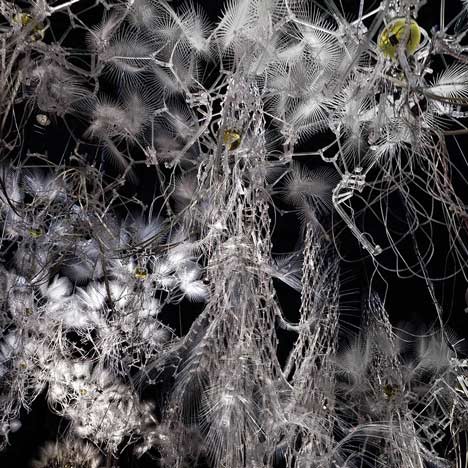
Hylozoic Ground by Philip Beesley
Venice Architecture Biennale 2010: Toronto architect Philip Beesley has installed a forest of acrylic fronds that move as though breathing inside the Canada pavilion at the Venice Architecture Biennale, which opens this week.
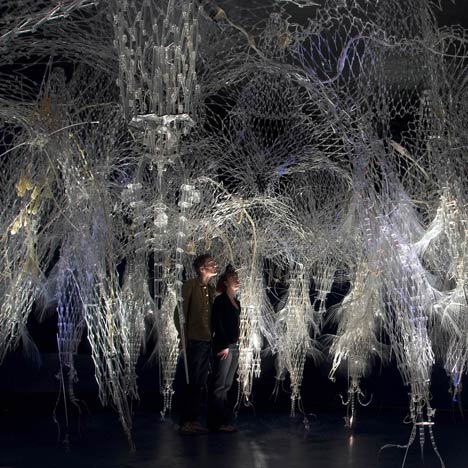
Called Hylozoic Ground, the installation is covered in sensors, microprocessors, mechanical joints and filters.
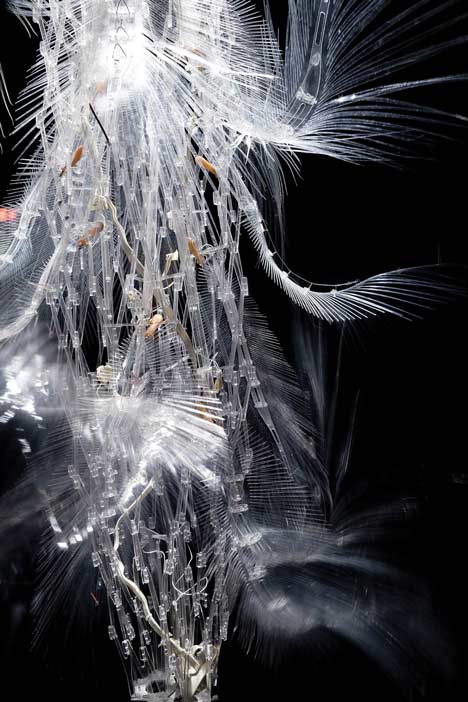
Above photograph copyright Pierre Charron
These allow the structure to move in response to its environment, drawing in and filtering moisture and organic particles from the air.

Above photograph copyright Pierre Charron
The title refers to hylozoism, an ancient philosophical view that matter has life, and proposes a future city that would operate as a living being.
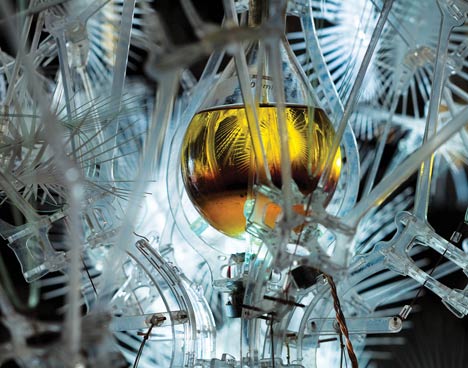
Above photograph copyright Pierre Charron
Beesley collaborated with University of Waterloo engineering director Rob Gorbet and chemist Rachel Armstrong.
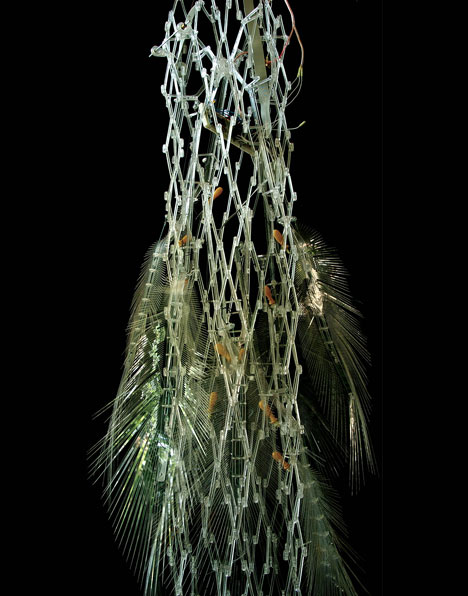
The Venice Architecture Biennale opens 29 August - 21 November 2010.
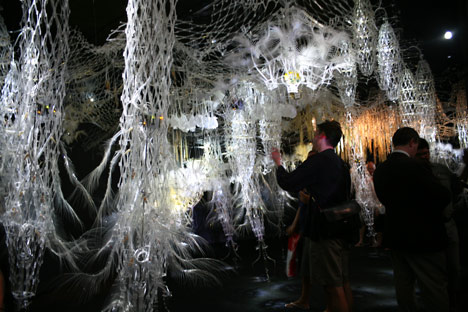
Here are some more details from Beesley:
HYLOZOIC GROUND ‐ PHILIP BEESLEY
CANADA PAVILION AT THE 12th INTERNATIONAL ARCHITECTURE EXHIBITION - LA BIENNALE DI VENEZIA
For the 12th International Architecture Exhibition Hylozoic Ground transforms the Canada Pavilion with an immersive, interactive environment made of tens of thousands of lightweight digitally-fabricated components fitted with meshed microprocessors and sensors. The glass-like fragility of this artificial forest is built of an intricate lattice of small transparent acrylic meshwork links, covered with a network of interactive mechanical fronds, filters and whiskers. The environment is similar to a coral reef, following cycles of opening, clamping, filtering and digesting. Arrays of touch sensors create waves of diffuse breathing motion, luring visitors into the shimmering depths of a forest of light. The project is designed by Philip Beesley, Associate Professor of Architecture at the University of Waterloo, with engineering director Rob Gorbet, experimental chemist Rachel Armstrong, and many collaborators.
The project’s title refers to ‘hylozoism’, the ancient belief that all matter has life. Hylozoic Ground offers a vision for a new generation of responsive architecture. The Hylozoic Ground environment can be described as a suspended geotextile that gradually accumulates hybrid soil from ingredients drawn from its surroundings. Akin to the functions of a living system, embedded machine intelligence allows human interaction to trigger breathing, caressing, and swallowing motions and hybrid metabolic exchanges. These empathic motions ripple out from hives of kinetic valves and pores in peristaltic waves, creating a diffuse pumping that pulls air, moisture and stray organic matter through the filtering Hylozoic membranes. ‘Living’ chemical exchanges are conceived as the first stages of self-renewing functions that might take root within this architecture.
HYLOZOIC GROUND BOOK LAUNCH
Philip Beesley’s Hylozoic Ground publication, edited by Pernilla Ohrstedt and Hayley Isaacs, will be launched during the opening reception of the Hylozoic Ground installation. This book describes Philip Beesley’s Hylozoic Ground project as it has evolved over the past five years and includes generous design documentation and installation photographs. In addition to contributions by colleagues at PBAI and collaborators Rob Gorbet and Rachel Armstrong, the book contains a curated collection of essays by Michelle Addington, Geoff Manaugh, Neil Spiller, and Cary Wolfe. Preface by Eric Haldenby and Detlef Mertins.
See also:
.
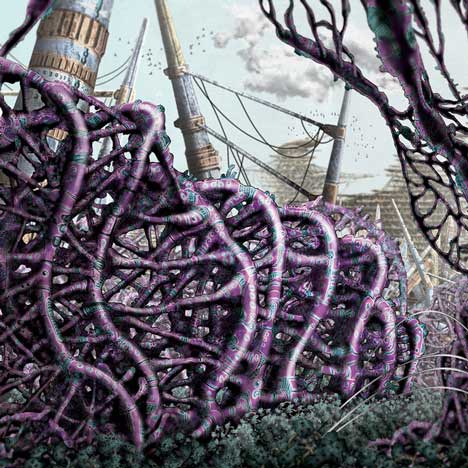 |
 |
 |
| The Transcendent City by Richard Hardy |
Belly Love by Florence Jaffrain |
Funktionide by Stefan Ulrich |